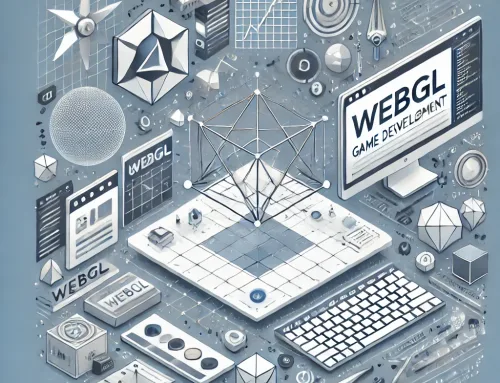Warum 3D Konfigurator Tools zu mehr Kundenzufriedenheit und Umsatz führen.
Für Hersteller, die versuchen, bei einer hohen Produktkomplexität, die Nachfrage der Kunden nach personalisierten, einzigartigen Produkten zu befriedigen, stellen 3D-Konfiguratoren eine gute Option dar.

Kunden wollten sich schon immer als etwas Besonderes fühlen und sind heute zunehmend bereit, dafür mehr zu zahlen. Im Gegenzug wollen sie eine tiefere und einflussreichere Rolle bei der Entwicklung der von ihnen gekauften Produkte spielen und Druck auf die Hersteller ausüben, Wege zu finden, wie sie ihre Prozesse der Welt außerhalb ihrer eigenen vier Wände zugänglich machen können.
Längst sind die Zeiten vorbei, in denen von den Verbrauchern erwartet werden kann, dass sie Standardprodukte „für alle“ akzeptieren. Viele Kunden wünschen sich heute die Möglichkeit, Produkte nach ihren individuellen Wünschen und Bedürfnissen zu personalisieren und anzupassen.
Dies ist einer der anspruchsvollsten Aspekte, die Hersteller realisieren müssen, was eine radikale Umstellung ihrer Design- und Fertigungsprozesse von der Massenproduktion zur Mass Customization erfordert.
In der heutigen Welt der On-Demand-Services war es für die Verbraucher noch nie so einfach, sich nach den Produkten umzusehen, die ihren Bedürfnissen am besten entsprechen, wobei viele von ihnen ihre Markenbindung entsprechend ändern.
Jedes Jahr recherchieren mehr und mehr Käufer online nach Waren, bevor sie persönlich einkaufen – ein wachsender Trends, der als „ROBO“ bekannt ist (Research Online, Buy Offline).
Die Möglichkeit, Marktangebote so einfach vergleichen zu können, bedeutet, dass der Wettbewerb nie härter geworden ist und mit den Erwartungen der Kunden an fortschrittlichere, innovativere und vielfältigere Produkte wächst.
Hinzu kommt, dass die Produkte deutlich komplexer geworden sind, mit eingebetteter Elektronik, Software, Konnektivität und Materialien der nächsten Generation.
Infolgedessen mussten die Hersteller ein tiefes Fachwissen über multidisziplinäre Techniken, fortschrittliche Simulationen, digitale Technologien, neue Fertigungsmethoden und Materialien entwickeln.
Die erfolgreiche Bewältigung all dieser Herausforderungen kann durch die Einführung von 3D-Konfigurationswerkzeugen erreicht werden.
Was sind 3D-Konfigurationswerkzeuge?
In der Vergangenheit war die detaillierte Betrachtung eines Endprodukts oder einer Design-Iteration nur physisch möglich, entweder in Ladengeschäften, Ausstellungsräumen oder mit Fertigungsmustern.
Digitale 3D-Konfigurationswerkzeuge haben das geändert und ermöglichen es, dass Produkte direkt in den Händen des Kunden zum Leben erweckt werden und ihm einzigartige Möglichkeiten bieten.
Nutzer können Entwürfe in Echtzeit visualisieren, das Modell drehen und zoomen, um die feinen Details zu sehen, wenn jede Option ausgewählt wird.
Die 3D-Modelle reagieren sofort auf Auswahländerungen wie Farbe oder Abmessungen und ermöglichen es dem Anwender, Produkteigenschaften und -optionen sofort zu überdenken und neu auszuwählen, bis er das für ihn optimale Design erreicht hat.
Dies ist besonders vorteilhaft für Hersteller komplexer Produkte, da es nicht immer einfach ist, sich vorzustellen, wie Produkteigenschaften oder -optionen aussehen oder in Beziehung zueinander stehen.
Was genau ist eine visuelle Echtzeit-Konfiguration und wie nutzen Unternehmen die Technologie?
Digitale Konfigurationswerkzeuge gibt es schon seit einiger Zeit, aber der jüngste Aufstieg von Cloud-Plattformen und die damit verbundene erschwingliche Rechenleistung und Zugänglichkeit stellen einen Wandel dar.
Digitale Assets wie 3D-Modelle, die in der Cloud gehostet werden, sind heute nicht mehr auf Engineering-Teams beschränkt, sondern können mit Vertriebsteams, Fertigungsmitarbeitern und Kunden auf der ganzen Welt geteilt werden, jederzeit und überall auf jedem intelligenten Gerät.
„Technologie wie Configure One CPQ präsentiert diese 3D-Modelle den Publikum angemessen. Sie liefert den Vertriebsteam das Produktwissen, das sie benötigen, um effizient zu konfigurieren, zu bewerten, zu offerieren und zu verkaufen. Zudem führt die Technologie den Kunden durch den Verkaufsprozess“, erklärt Austin Roche, Direktor der EMEA bei Configure One, einem weltweit führenden Anbieter von CPQ-Software (Configure, Price and Quote).
„Benutzer können sogar Animationen zu den 3D-Modellen hinzufügen, um das Erlebnis noch intensiver zu gestalten“, fügt Austin hinzu.
Innovation statt Wiederholung.
Seit fast 20 Jahren profitieren Hersteller von den visuellen Konfigurationstechnologien von Configure One, von der Anzeige einfacher JPEGs und statischer 2D-Bilder von Produkten bis hin zur Echtzeit-Erzeugung von 3D-Modellen und 2D-Zeichnungen, die eine echte Anpassung an ansonsten Standardprodukte ermöglichen.
„Diese Technologien ermöglichen es einem Kunden nicht nur, das Produkt so zu definieren, dass es seinen Bedürfnissen am besten entspricht, sondern reduzieren auch den Aufwand für einen Hersteller, indem sie die Regeneration von 3D-Modellen, 2D-Zeichnungen, Stücklisten (BoMs) und Arbeitsplänen automatisieren“, sagt Austin.
„Die Automatisierung dieser Prozesse reduziert die Auswirkungen der Bearbeitung von Aufträgen für einmalige, einzigartige Varianten, so dass sich Ihre technischen Ressourcen auf die Idee der nächsten Produktgeneration konzentrieren können, anstatt das gleiche Produkt in einer weiteren Variante zu modellieren“, fügt er hinzu.
Wie sieht die Zukunft aus?
Laut Austin wird die nächste Generation des Hochgeschwindigkeitsinternets wie 5G es ermöglichen, mehr Daten und damit mehr Details an die Nutzer zu liefern.
„Infolgedessen werden die Erwartungen an Rich Content weiter steigen“, prognostizierte er.
Die größte Entwicklung (und Chance), die er sieht, ist jedoch Augmented Reality und das, was sie präsentiert.
„Das Tempo, mit dem sich Augmented-Reality-Technologien in Bezug auf Leistungsfähigkeit und Benutzerfreundlichkeit weiterentwickeln, bedeutet, dass Hersteller in der Lage sein werden, ihren Kunden ein wirklich immersives Erlebnis zu bieten und sie genau auf die Fähigkeiten und die Passform eines bestimmten Produkts oder einer bestimmten Konfiguration einzuweisen.
Nahtlose Erlebnisse wie diese werden entscheidend sein, um nicht nur mehr Markenbekannheit und Loyalität, sondern letztlich auch zusätzliche Kundenaufträge zu generieren“, so Austin abschließend.
Vielen Dank für Ihren Besuch.


